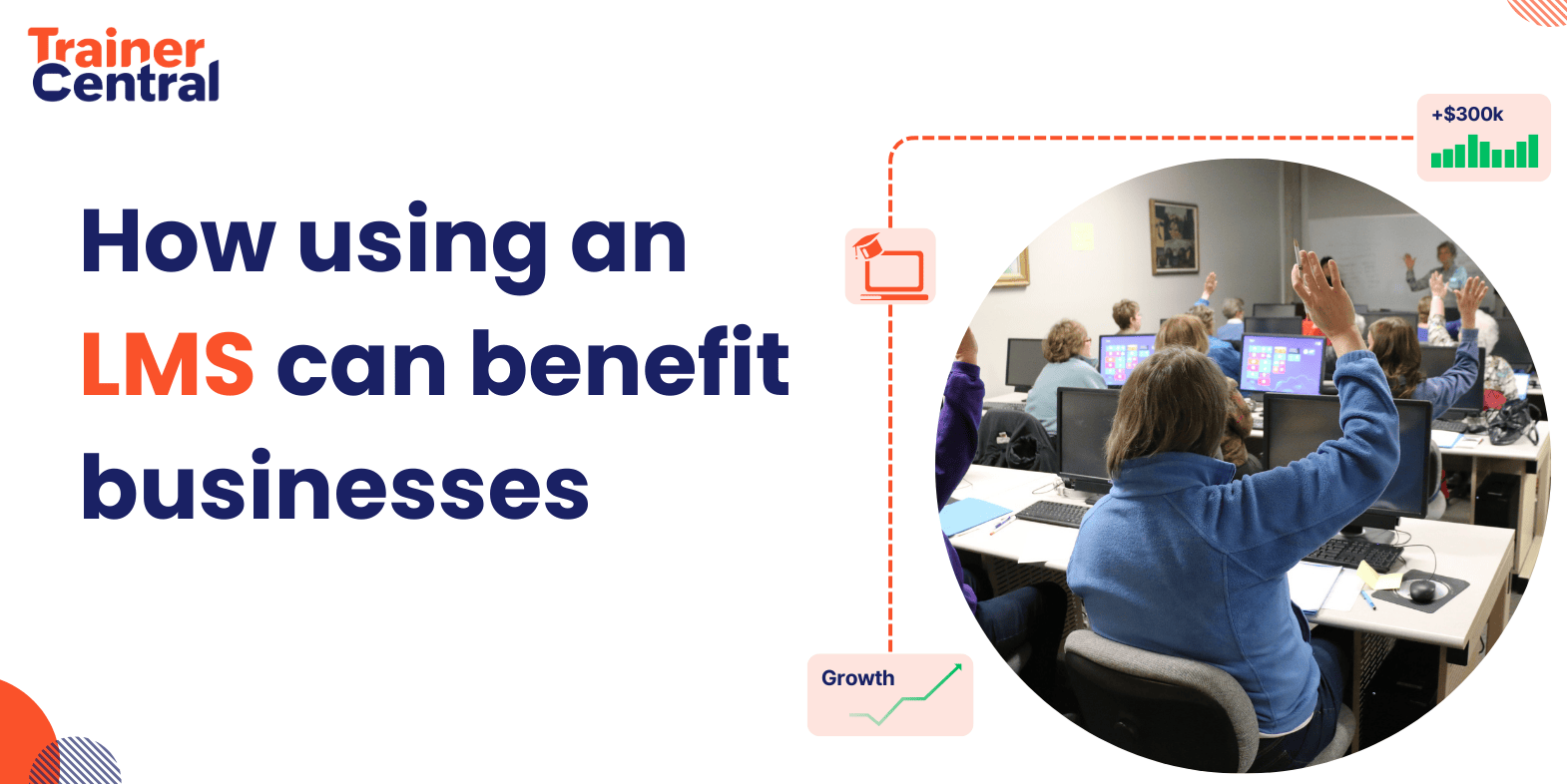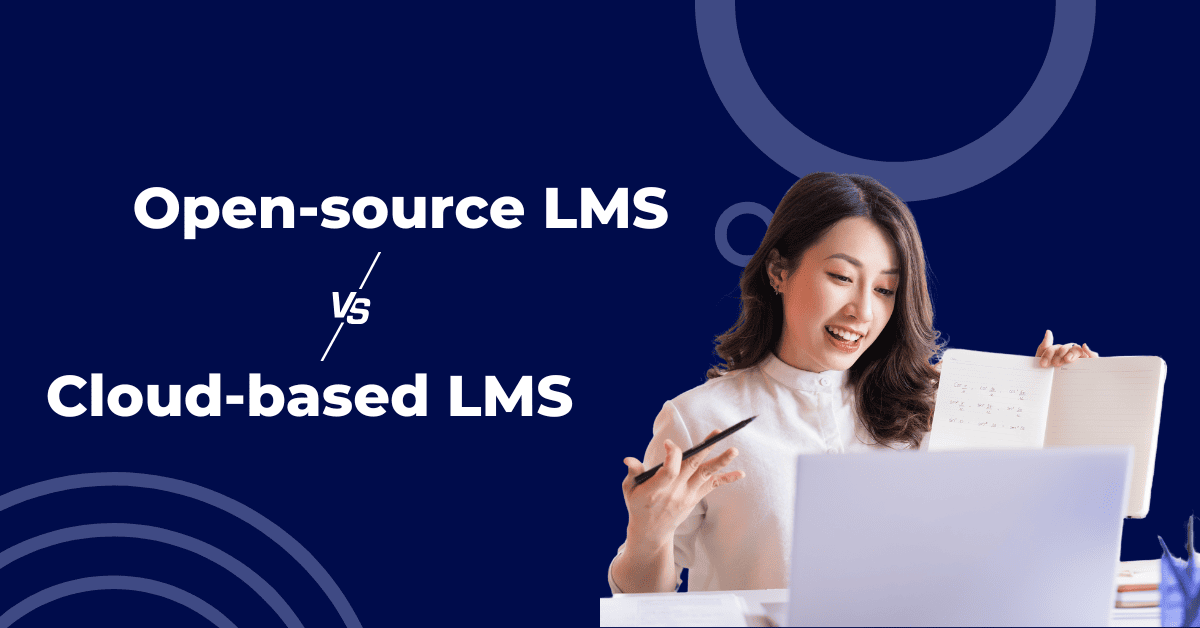- HOME
- E-Learning trends
- How using an LMS can benefit businesses
How using an LMS can benefit businesses
- Last Updated : February 21, 2025
- 63 Views
- 6 Min Read

Think about how much technology has transformed the way businesses operate, connect, and grow. In the corporate world, one tool has quietly been revolutionizing employee training and development—learning management systems (LMS). From startups to multinational corporations, LMS platforms are reshaping how teams upskill, adapt, and thrive in today’s competitive landscape.
And it’s not just a passing trend. The LMS market is booming, with projections suggesting it could hit a staggering USD $40.95 billion by 2029. But what’s driving this growth? Why are so many businesses turning to an LMS as their go-to solution for learning and development?
In this blog post, we’ll explore why using an LMS is a game-changer for businesses, unpack its benefits, and dive into how companies are leveraging LMS to streamline onboarding, enhance employee performance, and boost organizational productivity. Whether you're a business leader or a decision-maker, this could be the key to transforming your workforce training strategy and staying ahead in the ever-evolving business world.
What is a learning management system?
An LMS is a software application designed to manage, deliver, and track training and professional development content. It provides businesses with a centralized platform to create employee training programs, distribute learning materials, assess team performance, and analyze outcomes. From onboarding new hires to delivering compliance training and upskilling teams, LMS platforms have become a cornerstone of modern corporate learning and development strategies.
Some of the primary features of an online training platform for business include:
Content creation and management: Tools to develop, store, and organize learning materials.
User management: Capabilities to manage learners, instructors, and administrators.
Assessment and certification: Systems to conduct tests, quizzes, and issue certifications.
Analytics and reporting: Detailed insights into learner progress and course effectiveness.
The benefits of using an LMS for businesses
The advantages of adopting an LMS are transformative for businesses looking to streamline employee training, enhance performance, and achieve organizational goals. Here are some of the key benefits.
Streamlined content delivery
An LMS allows businesses to manage all aspects of employee training from a single platform. It centralizes content creation, distribution, and tracking, ensuring consistency and efficiency.
Example: In a corporate setting, an LMS can centralize compliance training, employee onboarding, and professional development materials, saving time and effort.
Cost efficiency
By replacing traditional classroom training with an LMS, businesses save on infrastructure, travel, and printed materials. This is particularly beneficial for organizations conducting global training sessions.
Statistic: According to a study by IBM, companies save up to $200 per employee by switching to e-learning.
Accessibility and flexibility
Employees can access training materials anytime, anywhere, making learning more convenient. This flexibility is crucial for:
- Remote teams
- Employees in different time zones
- Professionals balancing work with skill development
Customizable learning paths
Modern LMS platforms use AI-driven algorithms to create personalized learning experiences tailored to individual employee needs. This adaptive approach enhances engagement and improves knowledge retention.
Scalability
Whether you’re a small business or a large enterprise, an LMS can scale to accommodate a growing workforce and expand training programs without additional infrastructure costs.
Data-driven decisions
An LMS provides actionable insights that help businesses refine training programs, track employee progress, and measure training effectiveness, leading to continuous improvement.
Why an LMS is critical for organizations
An LMS is a strategic asset that empowers organizations to build skilled, knowledgeable, and motivated teams while driving business growth. Here’s how an LMS supports key organizational needs.
Employee upskilling
In today’s competitive job market, continuous learning is essential. An LMS enables structured upskilling initiatives through:
- Personalized learning paths tailored to employee roles and career growth.
- Certification programs to validate skills and compliance.
- Real-time feedback mechanisms to track progress and enhance learning outcomes.
Upskilling employees not only improves productivity but also boosts retention by creating career growth opportunities within the organization.
Compliance training
Industries like healthcare, finance, and manufacturing require rigorous compliance training. An LMS ensures:
- Course materials are always updated to reflect the latest regulations.
- Accurate tracking of completions for audits and reporting.
- Automated reminders for re-certification to keep employees compliant.
By automating compliance training, businesses reduce the risks of non-compliance while ensuring their workforce stays informed.
Onboarding new hires
A well-structured onboarding process improves employee retention and accelerates productivity. An LMS streamlines onboarding by delivering:
- Pre-boarding materials to familiarize new hires before their first day.
- Company policy training to ensure alignment with organizational values and expectations.
- Role-specific learning modules to equip employees with the knowledge needed for their positions.
This structured approach helps new hires integrate seamlessly into the organization, boosting engagement and performance from day one.
The challenges of not using an LMS
Organizations that rely on traditional training methods instead of an LMS face several challenges that can hinder efficiency, scalability, and overall learning effectiveness.
Inefficiency
Managing training programs manually, whether through emails, spreadsheets, or printed materials, is time-consuming, error-prone, and resource-intensive. An LMS automates these processes, saving time and effort.
Limited scalability
As businesses grow, traditional training methods struggle to accommodate increasing numbers of learners and courses. An LMS provides a scalable solution that supports workforce expansion without additional logistical burdens.
Lack of analytics and tracking
Without an LMS, tracking learner progress, assessing training effectiveness, and identifying skill gaps becomes difficult. This lack of data-driven insights can lead to inefficient training strategies and missed opportunities for improvement.
Inconsistent learning experiences
In a traditional training environment, employees may receive different versions of the same content, leading to inconsistent learning outcomes. An LMS standardizes training materials, ensuring every learner gets the same high-quality education, regardless of location or instructor.
Future trends in LMS-based training
The LMS industry is evolving rapidly, driven by advancements in technology and the changing needs of businesses and learners. Here are the key trends shaping the future of corporate training:
Artificial intelligence in LMS
AI-powered LMS platforms are transforming corporate training by offering:
- Predictive analytics to identify learning gaps and recommend targeted content.
- Personalized course recommendations based on employee progress and preferences.
- Automated grading systems to reduce administrative workload and streamline assessments.
These features create smarter, adaptive learning environments that enhance both engagement and efficiency.
Mobile learning
Mobile-friendly LMS platforms are redefining how employees access training, meeting the rising demand for on-the-go learning. With mobile e-learning projected to grow at 25% annually, businesses are prioritizing mobile-first training solutions to ensure accessibility and flexibility.
Microlearning for workforce training
Microlearning delivers bite-sized, focused content that is:
- Easier to digest and retain.
- More engaging, reducing learner fatigue.
- Ideal for busy professionals who need quick, just-in-time learning.
As employees seek efficient ways to upskill, microlearning within an LMS is becoming a key strategy for corporate training programs.
How to choose the right LMS for your business
Selecting the right learning management system is a critical decision that directly impacts the effectiveness of your corporate training programs. With numerous options available, it's essential to evaluate your needs and choose an LMS that aligns with your business goals. Here’s a step-by-step guide to making the best choice.
1. Identify your goals and audience
Start by defining what you want to achieve with your LMS. Are you training employees, onboarding new hires, or offering external customer education? Understanding your target audience will help you prioritize key features such as scalability, compliance tracking, or engagement tools.
2. Assess features and functionality
Look for LMS features that align with your training objectives:
- Course creation tools for building interactive content.
- Mobile accessibility to support remote and on-the-go learning.
- Gamification elements like badges and leaderboards to boost engagement.
- Advanced analytics to track learner performance and training effectiveness.
- Avoid overpaying for unnecessary features; focus on what truly enhances learning outcomes.
3. Evaluate its ease of use
A user-friendly interface is essential for both learners and administrators. Test the LMS to ensure it’s intuitive, easy to navigate, and doesn’t require extensive training to use effectively.
4. Check its integration capabilities
Ensure that the LMS integrates seamlessly with your existing tools, such as:
- HR management systems (HRMS) for automated tracking of employee training .
- Video conferencing platforms for live sessions.
- CRM tools for customer training programs.
5. Prioritize scalability
If your business is growing, choose an LMS that can scale with you. Whether you're expanding your workforce or increasing course offerings, your LMS should be able to accommodate growth without significant extra costs.
6. Consider customization options
Customization allows you to tailor the LMS to your brand’s identity and training needs. Look for options like:
- White-labeling to match your company branding.
- Personalized learning paths to cater to different employee roles.
- Custom certificates to reinforce achievements and compliance.
7. Assess support and training
Reliable customer support and training resources are crucial. Ensure the LMS provider offers:
- 24/7 customer support via chat, email, or phone.
- Comprehensive knowledge bases and tutorials for administrators and learners.
8. Review pricing and ROI
LMS pricing structures vary. Some charge per user, while others offer flat-rate subscriptions. Compare the costs against the value and ROI that the LMS will bring to your organization in terms of:
- Reduced training costs (e.g., travel, printed materials).
- Improved employee performance and retention.
- Time saved on manual training management.
9. Test the LMS with a free trial or demo
Most LMS providers offer free trials or demos. Use this opportunity to explore features and gather feedback from potential users. TrainerCentral provides a 15-day free trial to help businesses experience its capabilities before committing.
10. Read reviews and get recommendations
Research reviews, testimonials, and case studies to learn about other businesses’ experiences. If possible, seek recommendations from industry professionals who have successfully implemented an LMS.
Conclusion
An LMS is no longer a luxury, it’s an essential for businesses that want to simplify training, boost employee performance, and fuel growth. Whether it’s automating compliance training or helping employees upskill, the right LMS makes a real difference. By choosing a system that fits their needs and using it to its full potential, organizations can build engaging, scalable, and data-driven training programs that drive long-term success.


